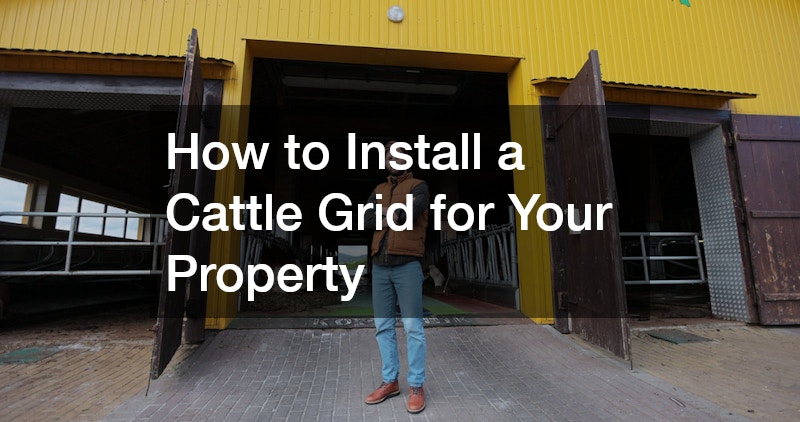This guide walks you through the installation process, from planning and materials to safety considerations, in line with Australian standards.
Planning Your Installation
Before commencing the installation, it’s critical to determine the ideal location for the grid. Typically, grids are installed at property entrances, boundary crossings or key access points between paddocks. Choose a site with stable soil and adequate drainage to avoid waterlogging, which can damage the foundation and reduce the grid’s effectiveness.
Ensure you consult your local council or shire office, as regulations for animal bridges can vary by region. In some areas, you may need permits or adhere to specific road safety requirements. Additionally, confirm whether the installation will affect easements, shared driveways or utility access points.
Selecting the Right Grid
Animal crossings come in various types and materials, including steel, concrete and composite options. Steel grids are favoured for their durability and ease of maintenance, while concrete options provide strength and long-term stability. Composite grids, although lighter, may not suit properties with high livestock traffic or heavy vehicle use.
When selecting a grid, consider:
- Load rating: Choose a grid that can withstand the weight of expected vehicles, including utes, trucks and trailers.
- Span and width: Ensure the grid matches your driveway or access road’s width and can span the required area without sagging.
- Anti-slip surface: Opt for a design with textured or ribbed surfaces to reduce the risk of slipping, especially in wet weather.
Many suppliers offer pre-fabricated animal grid kits, which simplify installation and ensure compliance with Australian standards.
Preparing the Site
Once you’ve selected a location and purchased the appropriate cattle grids, the next step is to prepare the site. Follow these steps to ensure a smooth and safe foundation:
- Mark the Area: Use stakes and string to mark out the area where the grid will be installed. Allow extra space on either side for support walls and drainage channels.
- Excavate: Dig a trench slightly larger than the grid dimensions to accommodate formwork, support beams and drainage.
- Install Drainage: Proper drainage is vital. Lay gravel or crushed rock at the base of the trench and consider installing a perforated drainage pipe to redirect water away from the structure.
- Set Foundations: Pour concrete footings or position precast concrete blocks at either end of the trench to support the weight of the grid and vehicles.
Allow adequate curing time for the concrete before proceeding with the next stage. This is crucial for long-term stability and safety.
Installing the Grid
With the foundations in place, you can install the grid itself. If using a pre-fabricated grid:
- Position Carefully: Use a crane or heavy-duty lifting equipment to lower the grid into place. Ensure it is level and properly aligned with the driveway or road.
- Secure the Grid: Bolt the grid frame to the concrete footings or secure it using the manufacturer’s recommended method. It should not move or shift under load.
- Backfill and Compact: Fill in the surrounding gaps with soil or crushed rock, compacting as you go to prevent future subsidence.
For DIY or custom builds, ensure each section of the grid is evenly spaced and welded or fastened securely. Test for stability before allowing traffic across the grid.
Adding Fencing & Signage
A cattle bridge is only effective when integrated with fencing. Extend fencing on both sides of the grid to prevent livestock from bypassing the structure. Use mesh or post-and-rail fencing as appropriate for your property layout and animal type.
It’s also advisable to install signage, particularly if the grid is near a road or public access area. Signs should indicate “Cattle Grid Ahead” and meet visibility standards for daytime and night-time use. Reflective markers or solar-powered lights can be added for extra safety.
Maintenance & Safety Tips

Clean out accumulated debris such as mud, sticks or manure, which can impede performance and create hazards. Replace worn parts promptly to prevent injury to livestock or vehicle damage.
Installing a cattle grid on your property is a smart investment that saves time, enhances livestock control and improves access. By planning carefully, choosing the right materials and following proper installation techniques, you can ensure your animal crossing provides long-term performance with minimal maintenance. Always adhere to local regulations and prioritise safety for both people and animals. With the right approach, a grid becomes a dependable and durable feature on your rural property.







